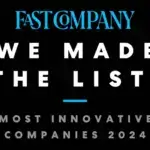A Q&A with Accela’s Director of Cannabis Regulation Judy Steele

Hemp is an emerging market that is priming itself for an aggressive U.S. expansion. After the 2018 Farm Bill, that officially legalized hemp at the federal level, growers and distributers are planning to unleash a wave of new products and services.
What this means for governments is a new regulatory landscape fueled by an unprecedented demand. There are more than 25,000 products globally that use hemp and these products touch many industries. Hemp can be used in automotive parts, furniture, textiles, construction supplies, cosmetics and in food and beverages — without the psychoactive qualities of traditional marijuana. Further, current growth has been rapid. The national advocacy group Vote Hemp has reported that between 2017 and 2018 hemp acreage has grown from 23,343 acres to 77,000 acres.
While this new industry is likely to yield greater tax revenues, now local governments must confront some of the difficult challenges that come with regulating a new industry. Business need to be licensed, facilities and products need to be inspected, and enforcement operations must be improved so officers know how to detect the difference between hemp cannabis plants and recreational cannabis.
To help governments with these issues, Judy Steele, Accela’s director of cannabis regulation, provides a few insights about what is driving the great change and how governments can prepare for it.’ Governments can also get more insights on managing the hemp industry by learning about Accela’s Hemp Licensing solution, announced on June 25.
What pieces of legislation and industry trends point to growth of hemp as an emerging industry in the U.S.?
Judy Steele: The Federal 2018 Farm Bill changed the policy related to hemp and the industry that will support the new laws and regulations. Hemp is now treated as an agricultural commodity. There are a wide range of products that use hemp, such as paper, food and beverages, animal feed and construction materials, just to name a few. State legislatures are acting to update their current legislation. Here are a few highlights of this:
- Colorado voters approved an amendment to the Colorado constitution to change the industrial hemp definition.
- Wyoming adopted House Bill 0171, an act related to food and drugs. It amended the controlled substances act’s list of substances, provided rule-making authority, authorized the possession and use of hemp and hemp products, repealed conflicting provisions, provided a penalty an requires the department to submit a state regulation plan, an appropriation, effective date and reporting requirements.
- Virginia’s Senate Bill 247 addresses industrial hemp research programs. The bill classifies all participants in any of the state’s research programs as growers or processors and it replaced the current licensing program in the state. Farmers will be able to do research without partnering with a university if the research complies with the Farm Bill.
- North Dakota’s House Bill 1349 was filed with their Secretary of State’s office on April 2, 2019. The bill calls for an act to create and enact the North Dakota Century Code, a piece of legislation that relates to the regulation of industrial hemp. The law includes a section to provide a continuing appropriation for the regulation of industrial hemp.
Since the signing of the Farm Bill, many states are updating their definitions to be in line with the changes at the federal level. Changes are taking place for the regulation of the emerging hemp industry as well as research and development related to commodities of this newly legalized industry and the agricultural products that result from hemp cultivation.
In addition, on April 19, 2019, The U.S. Department of Agriculture announced that they are providing an avenue for the safe importation of hemp seeds in the U.S. This opens the ability for hemp farmers to obtain hemp seeds for planting from suppliers outside the U.S.
How does the production and use of hemp differ from recreational cannabis?
Steele: Both hemp and marijuana can be grown outside or indoors, although hemp would take quite a facility. Hemp is most often grown as an agricultural crop though and hemp products are most often treated as an agricultural commodity. Plants that are grown outdoors can be set up to separate the male and female plants but there is always a possibility that they will be pollinated. When a female plant is pollinated, it will produce seeds and spend less energy producing quality buds. Buds are flower formations that are dense and they grow in density on the branch if they are not pollinated for four to six weeks, usually. Seedy plants result in a poor harvest with less flower material. Recreational cannabis is usually grown in a lock and secured facility. That can be a green house or warehouse space that’s used for the cultivation. Growing indoors allows a cultivator to control the amount of CO2 in the air and filtration systems can be used to ensure that pollen is not entering the facility and pollinating the plants. Some jurisdictions have a proximity requirement for hemp acres grown, to ensure that they are not located to close to a licensed cannabis cultivation. The goal is to keep the recreational cannabis plants from being pollinated, at all costs.
With these differences in mind, recreational cannabis is processed and sold to consumers in many different forms. From smokable bud to concentrates with many other products in between. Hemp crops and material are used for many different agricultural commodities, as described previously. The overlap that we’re seeing is the CBD products. Just like the plants for both hemp and recreational cannabis, there is a difference in the THC levels of the plant material. Hemp is most often limited at .3% THC and recreational cannabis has higher THC levels depending on the final product produced. So, there are CBD products high in THC and CBD products that are low in THC. Low THC CBD products don’t result in the same “high” or “euphoric” effects like high THC CBD products. Both products can be sold from the same retailer though. Sometimes you’ll see communities with just CBD stores though and they sell low THC CBD products without the requirement of a license.
What can state and local leaders do from a policy perspective to ensure hemp is regulated properly?
Steele: My advice would be to follow the Federal rulemaking process that is currently taking place. We’re already seeing State’s update their hemp definitions and programs. The Federal laws and rules will set the high-level regulations that State’s will comply with as they begin to develop or revise their laws and programs. It will also set regulations for seeds that farmers can purchase for planting. Seeds can be purchased out of state and cross state lines unlike recreational cannabis seeds or clones. Regulations will need to be in place for the cultivation, testing and processing of hemp plants and the resulting materials.
There are also CBD stores popping up in various communities as we’ve discussed. Many regulators have not developed or implemented rules and regulations for including it in the cannabis emerging market and the stores and suppliers are operating freely. Public safety is always a concern and regulation for cannabis products has been the precedent for most jurisdictions in some form or another. From banning the industry to supporting it in some controlled manner. Those that have programs for hemp and recreational cannabis will be faced with determining how CBD products from both hemp plants and recreational plants will be included in their current regulations or if they will even decide to regulate it.
What digital tools and resources should they consider to monitor and regulate the new industry?
Steele: There are so many aspects to regulating an industry, that could take some time! Taking a high-level look, there are a few key items that support a regulatory framework well.
Depending on the size of the program, data collection to capture key data elements, tracking of business processes and task activities to support reporting needs and document management are a few. Tracking payments and fines associated with enforcement activities is also another important area. Not to mention enforcement needs alone.
Having an easy to use application with the ability to support multiple user communities is a necessity. There are many people that need to know and be engaged in the process of ensuring regulatory compliance along with the public information needs. That can be a lot to balance and you need a system that can support those needs as much as possible. That will allow the staff the time to focus on the most important needs of the department. Reporting on the activities and tasks that go into support the regulatory framework is also necessary. It just lets you tell your story in an easy to organize manner.
To learn more about hemp policies and tools, visit the Accela Hemp Licensing solution page here.
Editor’s note: This article was updated on June 25.


